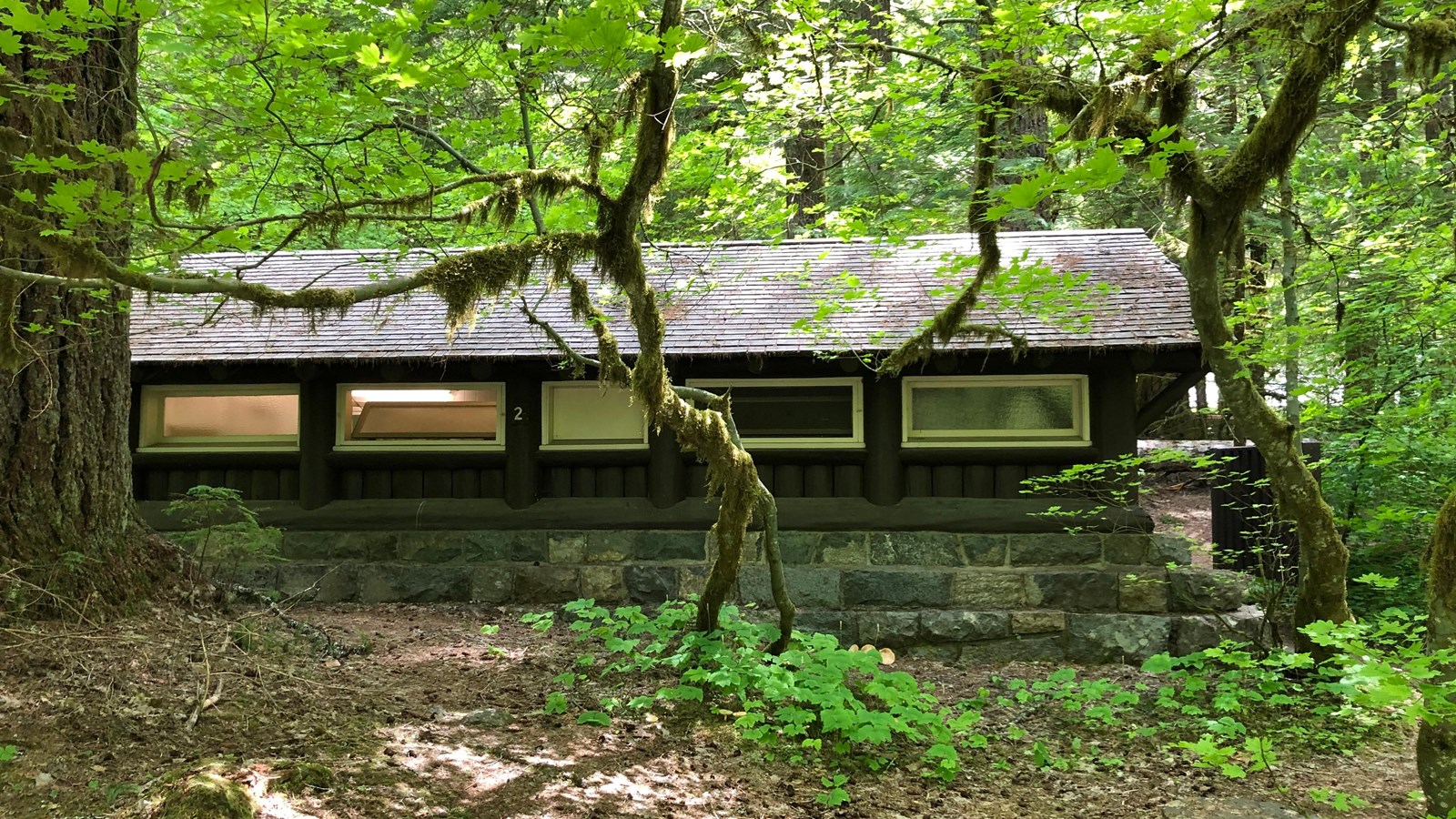Last updated: August 4, 2022
Place
Ohanapecosh Walking Tour: Human Intervention

NPS Photo
Quick Facts
Location:
Ohanapecosh
Amenities
3 listed
Restroom - Seasonal, Tent Campsites, Toilet - Flush
We are now in the campground, standing on paved roads and surrounded by established campsites. Park facilities are important infrastructure, enabling many people to experience this area while limiting impacts on the surrounding forest ecosystem. The comfort station to your left, protects water quality in the park by ensuring human waste doesn't seep into the same geothermic groundwater that feeds the hot springs. During Franklin D. Roosevelt’s New Deal, which began in 1933, the Civilian Conservation Corps (CCC) was created to conserve the country’s natural resources while providing jobs for young men. At Mount Rainier, CCC workers helped construct many of the rustic-style architecture buildings.
These historic buildings are good examples of park preservation. However, safeguarding historic architecture is just one aspect of preservation; the park works to preserve and protect natural and cultural resources as well. For more than 100 years the staff of Mount Rainier National Park has worked to fulfill the National Park Service mandate to “provide for the preservation from injury of all timber, mineral deposits, natural curiosities and wonders.” But we cannot do it alone. You can help preserve the unique features of this national park and protect these wonders for present and future generations by making a personal commitment to stay on the trail and keep pets in the campground area.
These historic buildings are good examples of park preservation. However, safeguarding historic architecture is just one aspect of preservation; the park works to preserve and protect natural and cultural resources as well. For more than 100 years the staff of Mount Rainier National Park has worked to fulfill the National Park Service mandate to “provide for the preservation from injury of all timber, mineral deposits, natural curiosities and wonders.” But we cannot do it alone. You can help preserve the unique features of this national park and protect these wonders for present and future generations by making a personal commitment to stay on the trail and keep pets in the campground area.
